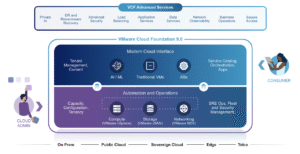
VMware is a more focused company than it was before the Broadcom acquisition. Large customers who use the top-of-the-range VMware Cloud Foundation are the focus. Many parts of the old VMware have been sold off or retired, while VCF has seen significant investment. Hopefully, nobody is surprised; this is precisely what Broadcom stated would happen. For large customers, the VCF9 release builds on the foundation established by earlier VCF releases. This release focuses on addressing the challenges of large customers using VCF as their central infrastructure at a massive scale.
VCF is a Suite
One of the benefits of simplifying the product lineup is that there is less variation across customers; everyone is licensed for the entire VCF suite, rather than making many à la carte purchases of combinations, as was standard in the past. The VMware team can now integrate the suite more tightly and does not need as much replication of standard features between components. We see this in the smoother navigation between inventory information, which displays clusters, and the troubleshooting details required to resolve issues. The installation process has been streamlined, removing the reliance on configuration files with arcane syntax. Updates are also more modular; services such as the VMware Kubernetes Service can be updated independently from the primary VCF update cycle. The shift of focus to the VCF Automation console, along with its support for multiple user personas, is another example of this simplification. The VCF Automation console enables an infrastructure architect to establish global policies and standards. A cloud administrator can manage a subset of the infrastructure through the same console, and a consumer of the infrastructure can achieve self-service deployment of resources for which they are authorized.
Cloud Consumption Model
The self-service deployment of on-demand resources is a central principle of cloud computing. The VCF Automation console enables self-service for developers, platform engineers, and other business unit staff on the corporate VCF platform. Resources are deployed using pre-configured service catalog blueprints, with the ability to set quotas on resource usage and establish governance around data and network connectivity. Cloud consumers can use a wizard-driven graphical interface or can use declarative configuration files and command-line tools for a more repeatable and consistent result. The recently released integration with ArgoCD enables a full GitOps deployment, utilizing a Git-based source file repository for both application code and infrastructure configuration.
Broadcom stated that they would focus on the largest of VMware’s customers and invest in significant development of the core platform. VMware Cloud Foundation 9.0 is the first result of this development effort, showcasing substantial improvements for customers building a private cloud on the VMware platform, particularly those embracing Kubernetes and self-service for cloud consumers.
Techstrong Field Day: July 29
Techstrong and Tech Field Day are collaborating to bring you a special event showcasing many of the innovations in VMware Cloud Foundation 9.0. You can hear from the experts at VMware and see the questions our Tech Field Day delegates have for them as we stream the special event for your viewing and interaction.
You can register for free right here:
https://www.techstrongevents.com/vmware-cloud-foundation-9-showcase/home


